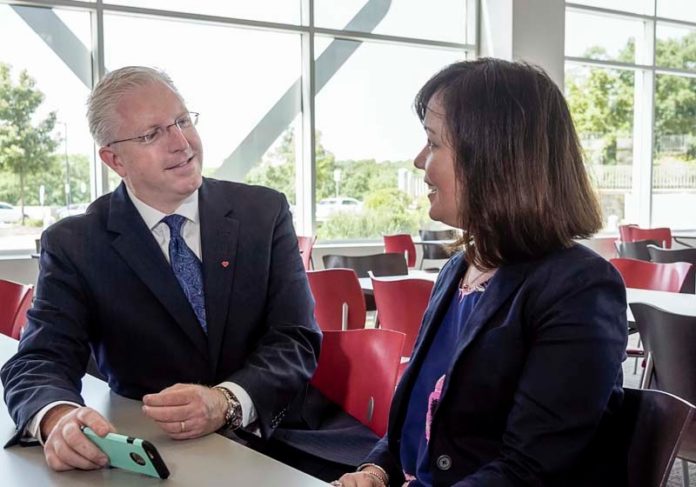
CVS Health Corp. in May hired Kerry Noone as director of employment branding and advertising for several reasons, but chiefly because “her wheelhouse is social media.”
That’s according to Jeff Lackey, vice president of talent acquisition, who says social media platforms have become imperative in the hiring process, especially at CVS, which in 2015 hired about 43,000 people aged 16-24 years old – a demographic highly engaged with social media.
“What we’ve found, as we’re engaging these populations, is that it’s social media that allows us to access them directly,” Lackey said.
Indeed, the traditional method of advertising a job and hoping applicants come out of the woodwork – a practice human resources specialists call “post and pray” – is largely a way of the past. And Rhode Island’s largest companies are using much more sophisticated recruiting models for talent acquisition.
Leo Perrone, global talent acquisition director at IGT, works primarily with LinkedIn, but also a number of other third-party data companies, to find potential candidates on social media. He says it’s become a necessity as companies compete for talent.
“It’s getting quite competitive for talent in Rhode Island, nationwide and worldwide,” Perrone told Providence Business News. “When I came into this position three years ago, we started purchasing more-advanced tools through social media, but in the past year, as the economy has improved, there’s a skills shortage in certain areas. In the past, it was nice to do. But now, it’s required.”
Companies use online information to learn all sorts of characteristics about potential hires. The information largely comes from professional platforms, such as LinkedIn, but also more personal sites, such as Facebook, Twitter, Instagram and Snapchat.
“Some companies have taken this to a crazy extreme,” said Anthony Wheeler, newly appointed associate dean of the College of Business at Bryant University. “Google, Facebook, Amazon and others create profiles based on web searches, what stories you read and what updates you have on Facebook. Others, I would say, are probably engaging in some other sort of analytics to better understand how to construct jobs and retain employees.”
Most human resources specialists agree that a successful recruiting strategy must go hand-in-hand with developing a strategy for brand engagement. That is, telling potential hires your company exists and that it might be a good fit professionally.
“We’re a private company, so we don’t enter new markets with a lot of splash,” said Tara Noonan Amaral, senior vice president at Fidelity Investments. “We use social media to talk about us as an employer and to create a level of curiosity among certain constituents.”
To grow that brand engagement, the company uses Instagram and Snapchat specifically for millennials, posting photos and stories that show the culture of the company and instill messaging around the company’s brand. Fidelity can then review clicks, applies, engagements and other connections to measure how well each post is received. Amaral says it’s as important for them to learn about the company as it is for Fidelity to learn about them.
“We’re doing research about the labor market, what the job profiles are, where in the country they exist and how we can educate them about how their skill set is valued at Fidelity to create that relationship, before we even offer the job,” she said.
Job candidates must also be careful about what they’re posting on social media, as companies are monitoring corporate brands across social media sites, and there’s always a chance a questionable post could come across the desk of the person in charge of hiring, according to Ramona P. Royal, human resources officer at Lincoln-based Amica Mutual Insurance Co.
“It happens quite a bit,” she said. “People will post publicly about an interview and use a hashtag in such a way that we inadvertently pick it up.”
Using social media and third-party data to find new hires is largely only used among larger companies. But Wheeler expects that will change down the road, as data companies make information more readily and financially accessible.
For big companies, however, it’s quickly becoming the new norm.
“Post and pray is all but dead in terms of our approach,” said Noone, who’s helping to develop recruitment strategies at her new position at CVS.
“The level of analytics we have available … rivals many marketing organizations on the level of depth and detail, and we’re not stopping,” Noone said. “This is our starting point. It’s a good start, but we’re definitely mining into better understanding who our target markets are and being able to position the message to get in front of them and resonate interest so that CVS is a potential next stop in their career and an employer of choice.” •












